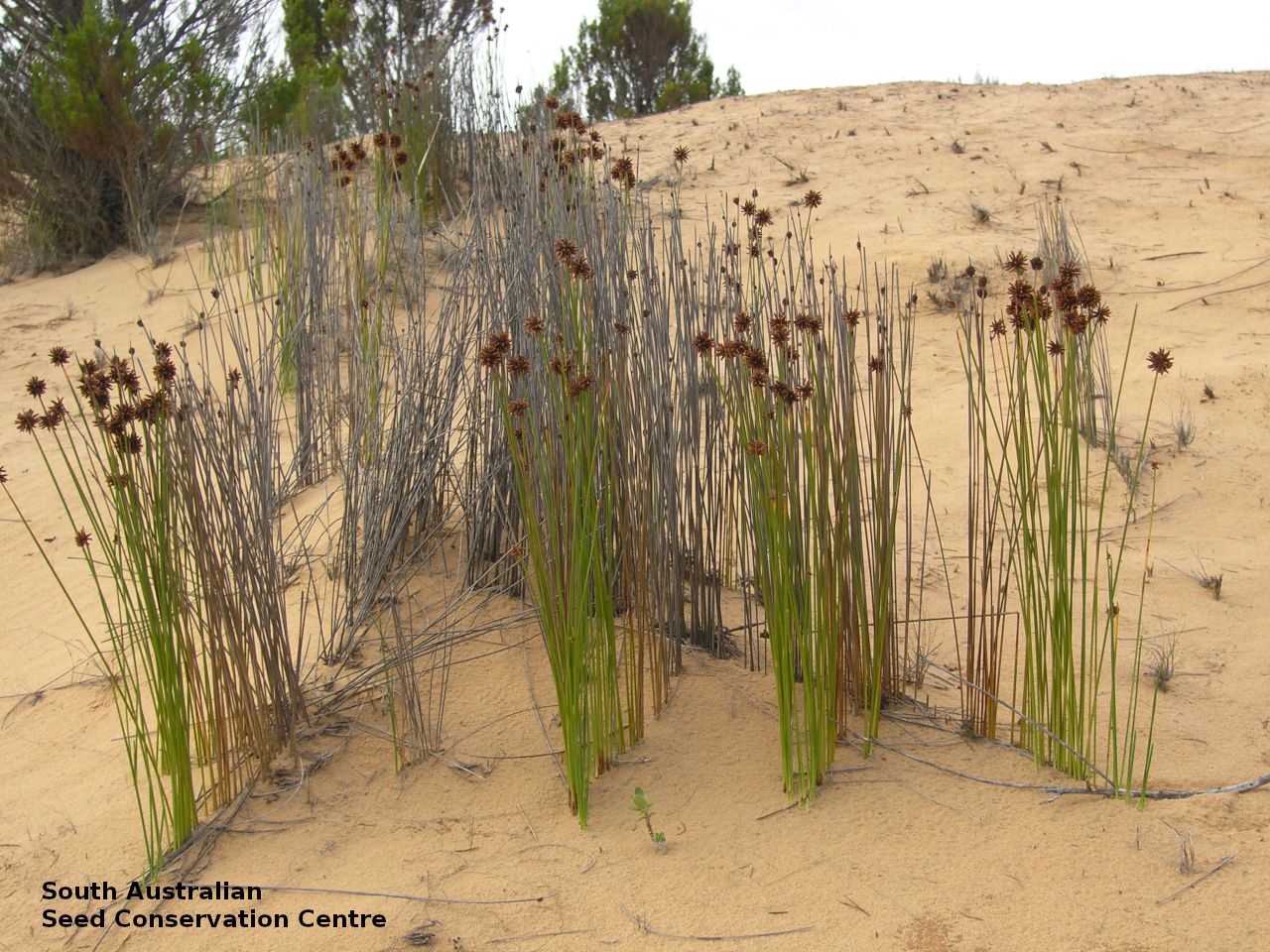
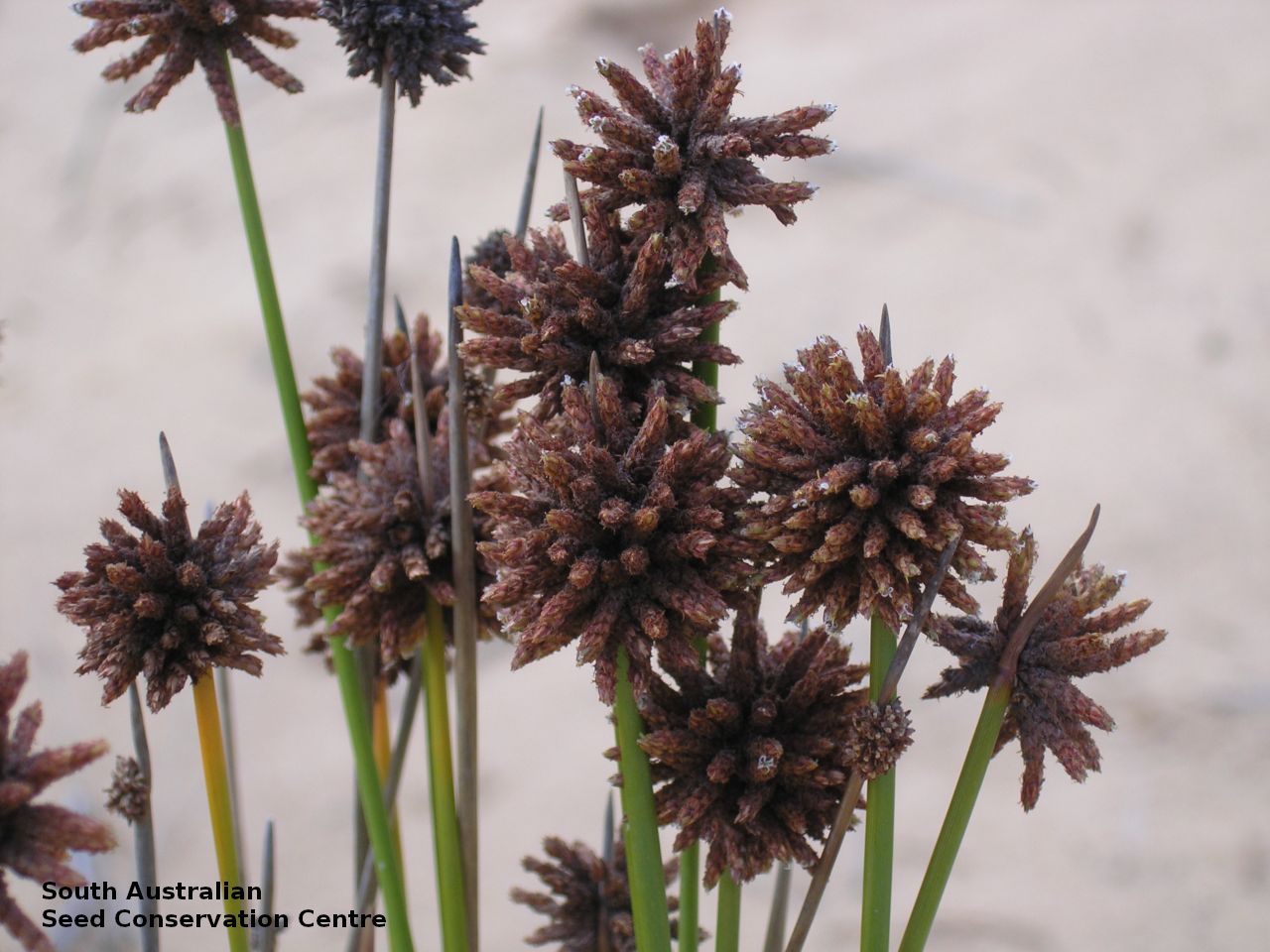
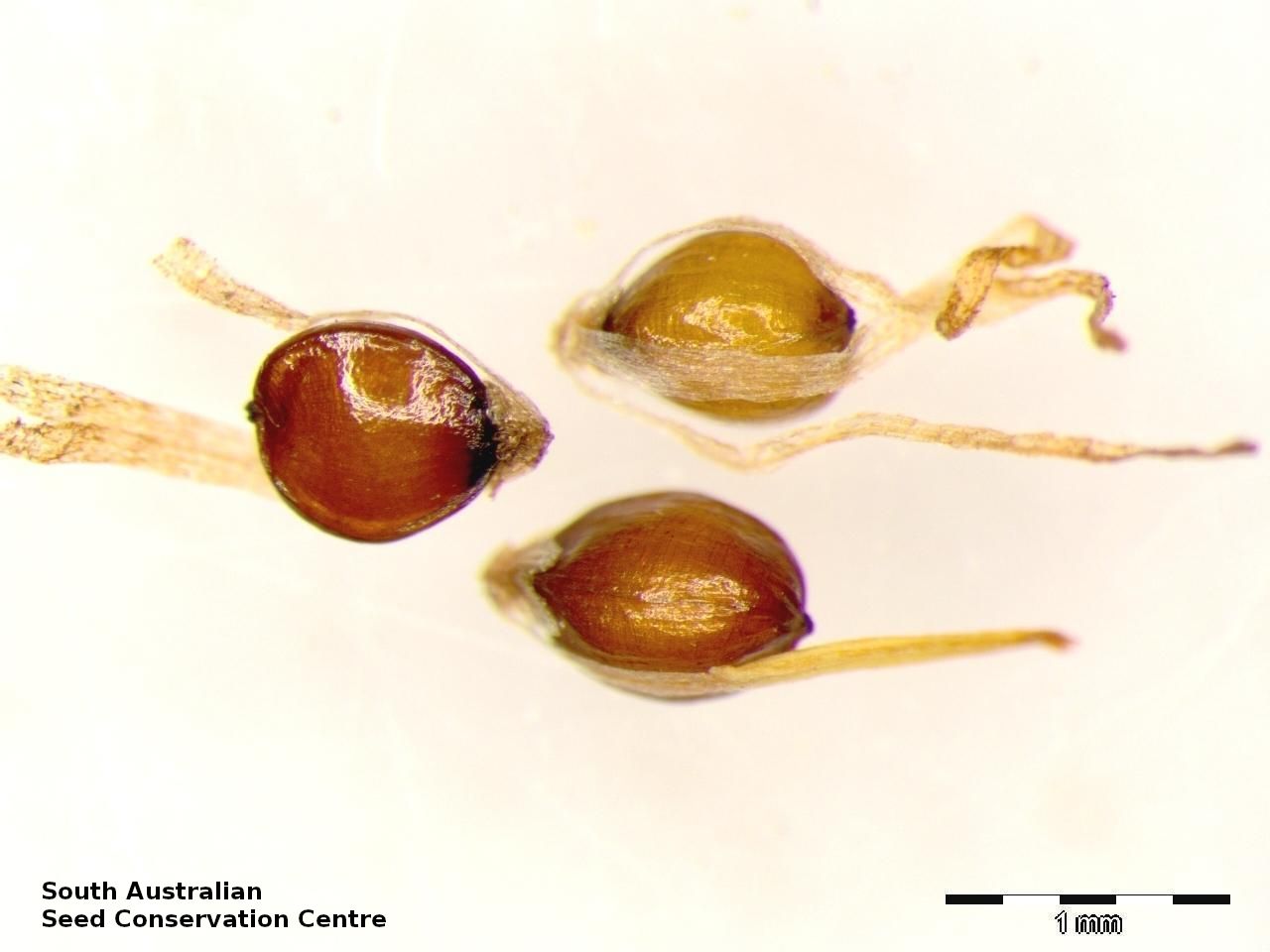
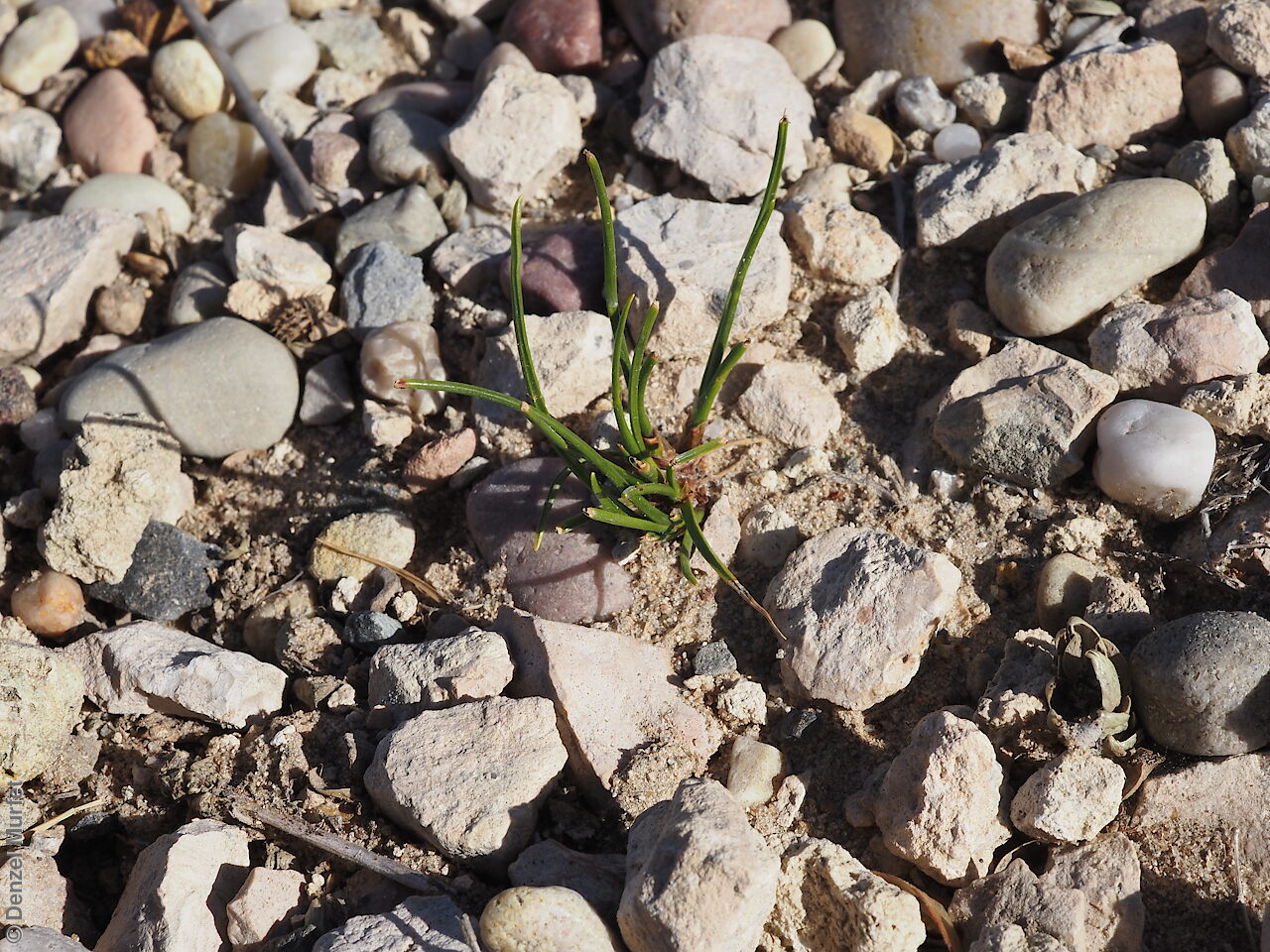
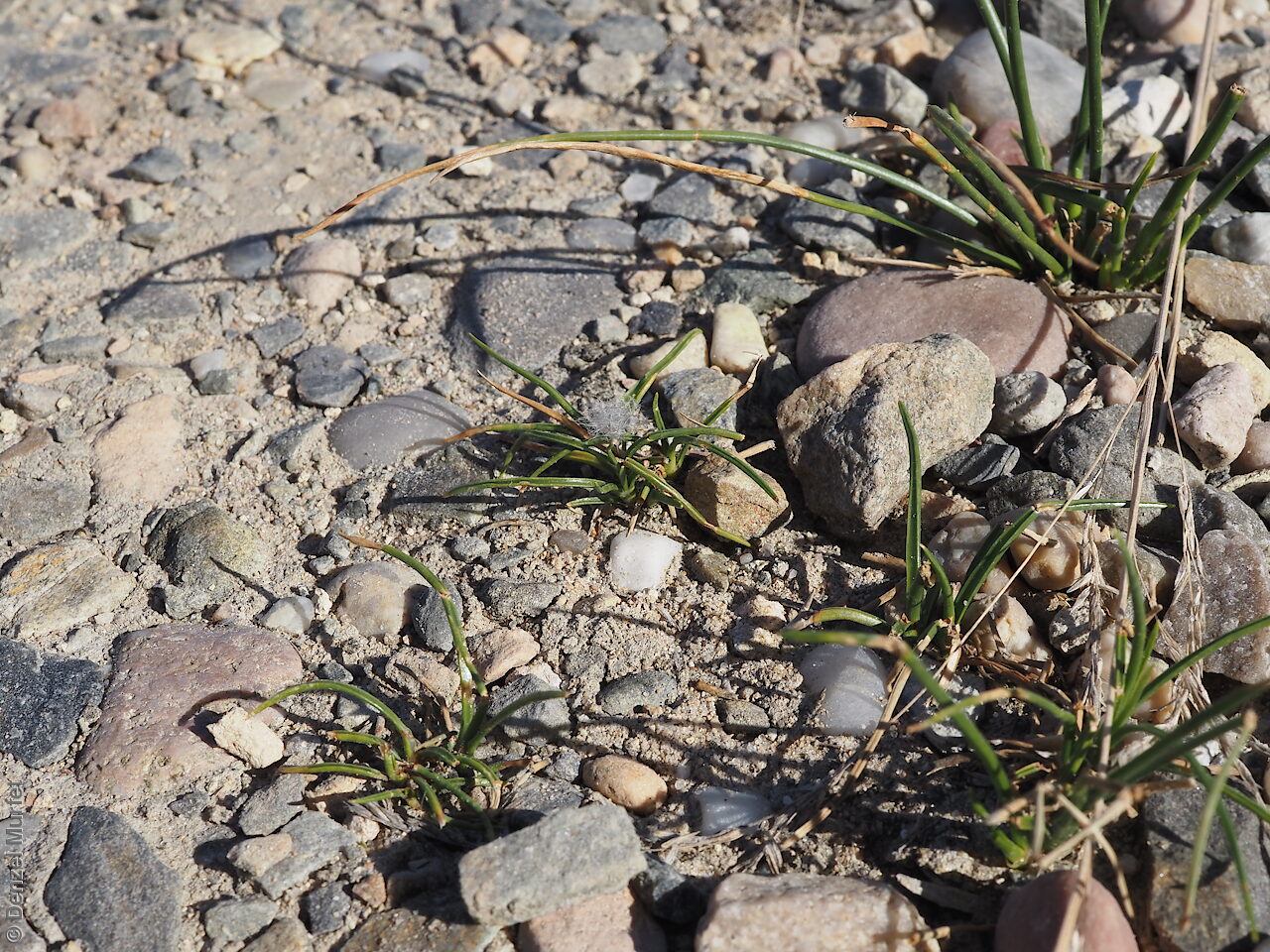

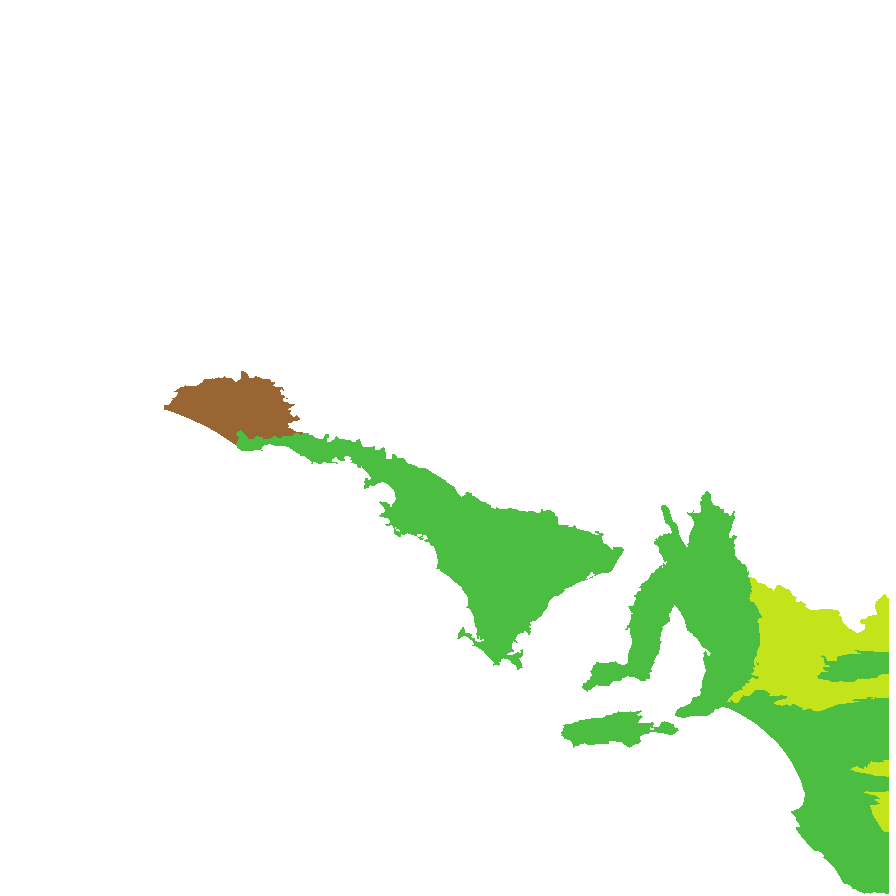
Botanical art
Prior names
Isolepis nodosa
Scirpus nodosus
Common names
Knobby club-rush
Knobby Club-sedge
Etymology
Ficinia named after Heinrich David Auguste Ficinia (1782-1857), a German botanist, physician, naturalist and professor of physics and chemistry. Nodosa from the Latin 'nodus' meaning knot or node, referring to the flower-head.
Distribution and status
Found southern South Australia, especially along the coast. Also found in Western Australia, Queensland, New South Wales, Victoria and Tasmania. Native. Common in South Australia. Common in the other States.
Herbarium regions: Nullarbor, Eyre Peninsula, Northern Lofty, Murray, Yorke Peninsula, Southern Lofty, Kangaroo Island, South Eastern, Green Adelaide
AVH map: SA distribution map (external link)
Plant description
An erect rhizomatous sedge to 1 m high. Stems are cylindrical with leaves reduced to sheaths. Flowers occur in globular heads at the tip of the stems. Flowers all year round. Fruits are cylindrical, brown ball containing numerous seeds,at the tip of stems Seeds are tiny orange spherical seeds about the size of a sand grain, less than 1mm long. Seed embryo type is capitate.
Seed collection and propagation
Collect seeds between January and December. Collect seed-heads that are brown and come off easily with your fingers. Place the seed-heads in a tray to dry for a week. Then rub the heads by hand and use a fine sieve to separated the unwanted material. Be careful as the seeds are very small. Seeds are orange brown and hard. Store the seeds with a desiccant such as dried silica beads or dry rice, in an air tight container in a cool and dry place. From one collection, the seed viability was high, at 100%. Seeds are non-dormant, viable seed should germinate readily.
| Location | No. of seeds (weight grams) | Number of plants | Date collected | Collection number Collection location | Date stored | % Viability | Storage temperature |
|---|---|---|---|---|---|---|---|
| BGA MSB | 34,380 (6.3 g) 34,380 (6.3 g) | 57 | 25-May-2004 | MKJ33 South Eastern | 1-Sep-2004 | N/C | +5°C, -18°C |
Number of plants: This is the number of plants from which the seeds were collected.
Collection location: The Herbarium of South Australia's region name.
% Viability: Percentage of filled healthy seeds determined by a cut test or x-ray.